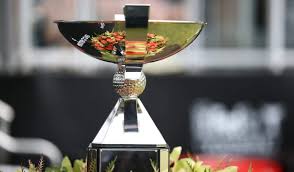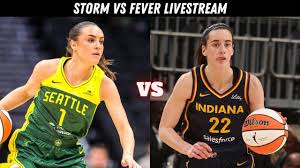
The FedEx Cup Payout
The FedEx Cup has become one of the most significant achievements in modern golf, not only because of the prestige but also because of the massive payout that comes with winning it. Unlike a regular PGA Tour event, where players compete for weekly prize purses, the FedEx Cup represents the culmination of an entire season’s effort on the PGA Tour. It is where consistency, resilience, and excellence are rewarded with some of the largest financial prizes in sports.
For golf fans and players alike, the FedEx Cup payout is always a hot topic. Who gets what? How is the prize money distributed? What does it mean for players’ careers and financial futures? In this article, we’ll dive deep into the history, structure, significance, and details of the FedEx Cup payout — breaking down everything you need to know about this unique championship.
What is the FedEx Cup?
The FedEx Cup is the season-long points competition on the PGA Tour, culminating in the FedEx Cup Playoffs. It was first introduced in 2007 as a way to bring more excitement to the end of the golf season.
Here’s how it works:
- Players earn points based on their performance in regular PGA Tour events.
- The better the finish, the more points awarded.
- After the regular season ends, the FedEx Cup Playoffs begin, narrowing the field through a series of tournaments.
- The season concludes with the Tour Championship in Atlanta, where the FedEx Cup Champion is crowned.
But beyond the glory and prestige, the biggest talking point is the payout. The FedEx Cup offers prize money unlike anything else in professional golf.
The Evolution of the FedEx Cup Payout
When the FedEx Cup began in 2007, the payout was impressive but has grown exponentially since then.
- 2007: Tiger Woods won the inaugural FedEx Cup and received a $10 million payout.
- 2018: The champion’s payout was increased to $15 million.
- 2022: Rory McIlroy won his third FedEx Cup title and took home $18 million.
- 2023: Viktor Hovland claimed the FedEx Cup with a record $18 million top prize.
The total bonus pool for the FedEx Cup has grown as well. In 2007, the overall pool was $35 million. By 2023, it had grown to $75 million. This makes it one of the richest prize pools in all of sports.

How the FedEx Cup Payout Works
Unlike traditional tournaments where only the top finishers take home significant amounts, the FedEx Cup distributes payouts to all players who qualify for the playoffs.
Here’s how it generally works:
- The Tour Championship winner (who also wins the FedEx Cup) gets the biggest payout — currently $18 million.
- The runner-up receives $6.5 million.
- The third-place finisher earns around $5 million.
- Even players finishing 30th place at the Tour Championship receive at least $500,000.
This ensures that every player in the playoffs benefits, rewarding consistency across the season rather than a single hot streak.
2023 FedEx Cup Payout Breakdown
The 2023 FedEx Cup payout was one of the richest in golf history, with a $75 million total pool. Here’s a look at the distribution:
- 1st place – $18 million
- 2nd place – $6.5 million
- 3rd place – $5 million
- 4th place – $4 million
- 5th place – $3 million
- 6th place – $2.5 million
- 7th place – $2 million
- 8th place – $1.5 million
- 9th place – $1.25 million
- 10th place – $1 million
11–15th place – Between $950,000 and $700,000
16–20th place – Between $680,000 and $620,000
21–25th place – Between $595,000 and $550,000
26–30th place – Between $540,000 and $500,000
This structure guarantees that all 30 Tour Championship qualifiers walk away with life-changing money.
Comparison to Major Golf Tournaments
The FedEx Cup payout dwarfs most other golf prizes. Let’s compare:
- Masters Tournament: The 2023 champion, Jon Rahm, won $3.24 million.
- U.S. Open: The 2023 champion, Wyndham Clark, earned $3.6 million.
- The Open Championship: The winner, Brian Harman, took home $3 million.
- PGA Championship: The purse in 2023 awarded $3.15 million to Brooks Koepka.
By contrast, the FedEx Cup Champion’s $18 million payout is nearly six times greater than any single major championship.
This makes the FedEx Cup the most financially rewarding achievement in golf.
Chapter 6: Why the FedEx Cup Payout Matters
For PGA Tour players, the FedEx Cup payout is more than just money:
- Security: Even mid-tier players who finish in the top 30 can secure their financial future.
- Recognition: Winning the FedEx Cup cements a player’s legacy.
- Motivation: The staggering payouts add intensity to the season’s final stretch.
- Tour loyalty: In recent years, with competition from rival tours like LIV Golf, the FedEx Cup payout is an incentive for top golfers to remain with the PGA Tour.
Memorable FedEx Cup Champions and Their Payouts
The FedEx Cup has produced some legendary winners:
- Tiger Woods (2007, 2009) – The first-ever champion, taking home $10 million both times.
- Rory McIlroy (2016, 2019, 2022) – The only player to win three FedEx Cups, earning over $50 million from the playoffs alone.
- Jordan Spieth (2015) – His dominant season ended with an $10 million FedEx Cup victory.
- Dustin Johnson (2020) – Won the FedEx Cup with $15 million, solidifying his status as one of the top players of his era.
- Viktor Hovland (2023) – Claimed his first FedEx Cup title and the record-setting $18 million prize.
These champions didn’t just secure massive paydays — they also cemented their place in golf history.
Year-by-Year FedEx Cup Payout History
The FedEx Cup payout has increased significantly since its inception. Here’s a year-by-year look at how the top prize has grown:
- 2007 – Tiger Woods: $10 million
- 2008 – Vijay Singh: $10 million
- 2009 – Tiger Woods: $10 million
- 2010 – Jim Furyk: $10 million
- 2011 – Bill Haas: $10 million
- 2012 – Brandt Snedeker: $10 million
- 2013 – Henrik Stenson: $10 million
- 2014 – Billy Horschel: $10 million
- 2015 – Jordan Spieth: $10 million
- 2016 – Rory McIlroy: $10 million
- 2017 – Justin Thomas: $10 million
- 2018 – Justin Rose: $10 million (last year before increase)
- 2019 – Rory McIlroy: $15 million
- 2020 – Dustin Johnson: $15 million
- 2021 – Patrick Cantlay: $15 million
- 2022 – Rory McIlroy: $18 million
- 2023 – Viktor Hovland: $18 million
In just 16 years, the top prize nearly doubled from $10 million to $18 million, reflecting the PGA Tour’s push to remain the most lucrative and prestigious golf circuit.

\How the FedEx Cup Payout Impacts Players’ Careers
Winning the FedEx Cup isn’t just about a single payday — it can change the trajectory of a golfer’s career.
Financial Stability
For top players, the FedEx Cup payout adds to already lucrative endorsement deals and tournament winnings. But for mid-tier or younger players, just qualifying for the Tour Championship (and earning $500,000 or more) can provide stability, allowing them to invest in coaching, travel, fitness, and training.
Legacy
Golf history doesn’t just remember major championship winners — it remembers FedEx Cup champions. Tiger Woods, Rory McIlroy, and Jordan Spieth are celebrated not only for their majors but also for their dominance in FedEx Cup seasons.
Confidence
Winning the FedEx Cup often boosts a golfer’s confidence. Players like Rory McIlroy (2016, 2019, 2022) and Patrick Cantlay (2021) used their playoff success as springboards for the following seasons.
Memorable FedEx Cup Payout Stories
Some FedEx Cup payouts have been especially significant in golf history:
- Bill Haas (2011): Not only did Haas win $10 million, but he did so after one of the most famous shots in playoff history — a miraculous recovery from the water on the 17th hole at East Lake.
- Dustin Johnson (2020): In a pandemic-shortened season, Johnson dominated the playoffs, earning $15 million at a time when golf and other sports were facing uncertainty.
- Rory McIlroy (2019, 2022): Each of McIlroy’s three FedEx Cup victories has come with record payouts, reinforcing his reputation as a clutch performer in season-ending events.
- Viktor Hovland (2023): His breakthrough season ended with an $18 million payday, elevating him into golf’s elite tier overnight.
FedEx Cup Payout vs. LIV Golf
In recent years, golf has faced a major shift with the emergence of LIV Golf, a Saudi-backed rival league. One of LIV’s main selling points is its huge prize money and guaranteed contracts.
- LIV Golf events offer purses of $25 million per tournament, with $4 million going to the winner.
- Players also receive guaranteed contracts, sometimes worth hundreds of millions.
In response, the PGA Tour has increased its payouts — especially for the FedEx Cup. The $18 million top prize and $75 million pool are part of the Tour’s strategy to compete financially.
This “prize money arms race” has made golf one of the most lucrative sports globally, with players benefiting the most.
Controversies Around FedEx Cup Payouts
While most celebrate the massive payouts, there have been criticisms:
- Too much money for too few players – Some argue that golf should spread the money more evenly across lower-tier professionals.
- Wealth gap – Top players earn enormous sums, while struggling players outside the playoffs often scrape by.
- Pressure and fatigue – The chase for big payouts adds pressure to an already long PGA Tour season.
- Comparison to majors – Purists argue that the FedEx Cup should not financially overshadow golf’s major championships.
Despite these criticisms, the payouts have continued to grow, reflecting golf’s expanding sponsorship and media value.

How Payouts Influence Player Decisions
Money has always been a factor in professional sports, and the FedEx Cup payout plays a big role in player choices:
- Tour Commitment: Players are motivated to play more PGA Tour events to qualify for the playoffs.
- Scheduling: Golfers often shape their season schedules around maximizing FedEx Cup points.
- Career Priorities: For some, the chance to win $18 million in a single week rivals the prestige of winning a major championship.
The Economics Behind the FedEx Cup Payout
The FedEx Cup payout isn’t just about rewarding players — it reflects the business of golf.
- FedEx sponsorship: The logistics giant pays hundreds of millions to sponsor the Cup, giving the PGA Tour financial power.
- TV contracts: Networks like CBS, NBC, and ESPN pay heavily for playoff broadcasting rights, fueling the payouts.
- Corporate hospitality: Companies pay big money to host clients at playoff events, adding to the revenue stream.
The combination of corporate sponsorship and television rights makes the FedEx Cup one of the richest competitions in all of sports.
Future of the FedEx Cup Payout
Looking ahead, it’s likely that the FedEx Cup payout will continue to rise.
- 2025 and beyond: Many insiders expect the champion’s prize to reach $20 million.
- Global expansion: With golf’s global growth, international sponsors may boost the prize pool further.
- Competition with LIV Golf: As long as LIV Golf exists, the PGA Tour will likely keep increasing payouts to retain stars.
The FedEx Cup payout has gone from $10 million in 2007 to $18 million in 2023. At this rate, golf could soon see payouts rivaling the biggest contracts in sports.
Why Fans Care About the Payout
For fans, the FedEx Cup payout adds extra drama to the playoffs. Watching a player sink a putt knowing it’s worth millions adds intensity to every shot.
- Life-changing money: For mid-tier players, even finishing 20th could mean financial freedom.
- Legacy and storylines: Fans love to see players chase both history and huge prizes.
- Rivalries: The high stakes have fueled rivalries, as players compete not just for trophies but also for record-breaking checks.
Conclusion
The FedEx Cup payout has redefined professional golf. What began as a $10 million prize in 2007 has become an $18 million jackpot with a $75 million pool by 2023. It has elevated the PGA Tour, rewarded consistency, and created some of the most memorable moments in golf history.
While debates continue about money in sports, one thing is certain: the FedEx Cup payout has made the playoffs a must-watch event for fans and a life-changing opportunity for players.
As the PGA Tour continues to grow and compete with rival tours, the payouts will only get bigger — ensuring that the FedEx Cup remains one of the most prestigious and lucrative prizes in sports.


